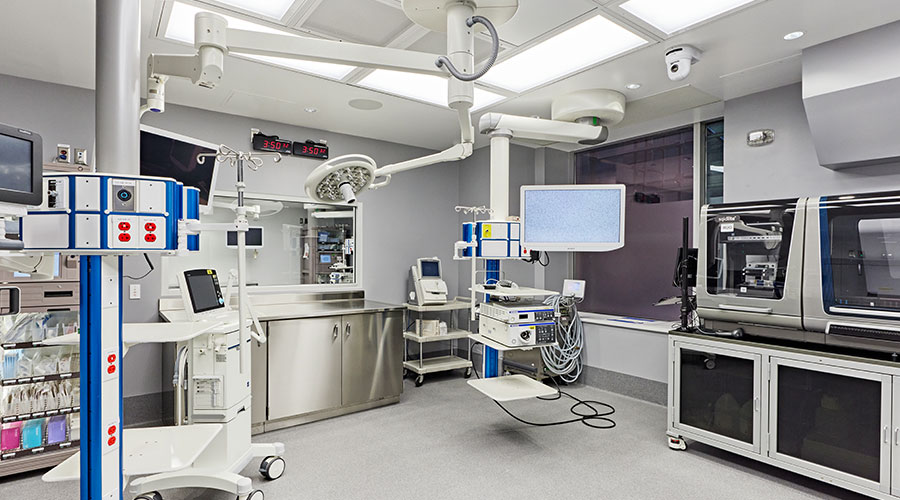The COVID-19 public health emergency declaration will expire in May 2023, eliminating many of the CMS waivers put in place to respond to the emergency and requiring hospitals across the United States to once again meet these requirements. Healthcare organizations are in a much different place financially than they were three years ago. Last year was deemed the worst financial year for hospitals and health systems since the start of the pandemic. Today, inflation and staffing challenges are straining operating budgets on all fronts.
As financial concerns weigh on healthcare leaders, it remains vital that short-term fixes do not overshadow long-term plans. In this regard, key departments should have sufficient funding to support their ongoing work.
This includes facilities management. Hospital executives must bring a representative from facilities management into the fold because they can give key insights into the capital expenditures that affect a system’s compliance, patient safety and ability to withstand future disasters. Healthcare leaders must keep these four crucial components of facilities management top of mind when budgeting.
Regulatory compliance
Regulatory compliance should never be an afterthought. Hospital leaders are rightly focused on navigating financial headwinds for systems as a whole, and an experienced facilities management partner can keep compliance and preventive maintenance top of mind.
This emphasis includes pinpointing concerns before they become significant issues and maintaining thorough documentation to be prepared for a surveying agency visit. Ensuring continuous survey readiness and proactive updates will come with some costs, but they will be far more affordable in the long run than if a compliance issue needs emergency repairs.
Patient safety
A recent study found that in the United States, nearly one in four patients admitted to the hospital will experience harm. Patient safety is always critical, and facilities managers lead the way in ensuring a safe healing environment for staff, patients and visitors. Patient safety must be fully integrated into daily facilities management and compliance, including the reduction of ligature points and potential weapons for patients who might be at risk for self-harm.
Healthcare leaders also should work alongside facilities staff to create additional plans for safety and ensure they meet all safety measures consistently. As with regulatory compliance, the costs associated with preventive work far outweigh those that come following a safety incident.
Emergency preparedness
Emergency preparedness is crucial to ongoing operations. Facilities management teams are integral for preparing and executing emergency management plans to ensure safety and consistent ongoing operations during an emergency, which can happen anytime and anywhere. An active shooter incident, infectious disease outbreak or natural disaster provides little to no warning and leaves even less time to prepare.
Investing in an in-house emergency management team can have a large impact on the response and recovery time of facilities. Not only do on-site teams maintain an intimate knowledge of the facility, staff and procedures. They also can tailor emergency responses to unique situations.
Prioritizing flexible investments
Prioritizing capital investments becomes even more challenging when budgets are tight. Healthcare leaders tend to prioritize clinical equipment during the capital budgeting process, and items related to the physical environment often are overlooked.
Physical environment capital needs are not just sunk costs. They are performing assets that help clinical teams perform their job. Healthcare leadership should gain insights from facilities’ teams during the capital planning process. These teams can offer data and industry benchmarks to demonstrate the value of upgrading and replacing items within the care environment, resulting in bottom-line savings.
Investing in facilities processes creates continued success for healthcare systems. When an organization prioritizes facilities management, individual facilities will experience a secure healing environment, safer patient experience, consistently up-to-date operations and decreased losses, all of which benefit the overall organization.
Every penny counts. Investing in fully integrated facility management brings multiple and sometimes seemingly disparate systems and processes together to streamline work and budgets. Making a concerted effort to fund facilities management properly will not break the bank, but skipping it just might.
Scott Cormier is vice president of emergency management, environment of care and safety at Medxcel specializing in facilities management, safety, environment of care and emergency management.

 Building an Organ Regeneration Lab at UHN's Toronto General Hospital
Building an Organ Regeneration Lab at UHN's Toronto General Hospital Oracle Health Hit by Data Breach, Patient Data Possibly Compromised
Oracle Health Hit by Data Breach, Patient Data Possibly Compromised Ground Broken on New MD Anderson Sugar Land Facility
Ground Broken on New MD Anderson Sugar Land Facility Florida State University Reveals Plans for Panama City Beach Hospital
Florida State University Reveals Plans for Panama City Beach Hospital The Effect of Over-Cleaning on Human Health
The Effect of Over-Cleaning on Human Health